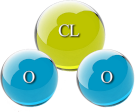Abcess solved in guinea pig
I would like to share my personal testimony regarding an abscess that developed in my female guinea pig, affectionately known as Cuis.
At the age of 2 years, she was diagnosed with an abscess located on the left side of her jaw. After a thorough examination, a sample of the pus was cultured, and the results revealed that she had a particularly resistant infection. According to the veterinarian, this type of infection in cattle is often associated with a form of cancer. It's worth mentioning that my guinea pig regularly had the opportunity to roam freely in the field and enjoy fresh grass, with cows grazing nearby, which may have contributed to her condition.
Initially, she was prescribed an antibiotic that was deemed the most effective based on current research; however, we soon discovered that this particular medication could only be administered for a maximum of four days. Unfortunately, the infection returned rather aggressively, leading to a deterioration where it began to consume part of the bone in her jaw. As a result, her bite became misaligned, leaving her with what we referred to as a slipped bite.
To accommodate her eating difficulties, we had to switch her diet to wet food so that she could manage to eat without pain. Additionally, I started providing her with vegetable juices as a supplemental source of nutrition. Throughout this challenging period, she lost a significant amount of weight, and it was heartbreaking to learn that the life expectancy for guinea pigs facing such severe infections is typically around three months.
In my desperate attempt to help her recover, I began administering 0.3 mL of CDS diluted in 3 mL of water, divided into three separate daily doses. I also applied pure CDS spray and occasionally diluted it in water directly onto the abscess two or three times each day. It felt like an experiment as I was carefully considering her weight and using as a reference the maximum dosage typically prescribed for adult humans, which is 40 mL per day in extreme cases.
Throughout this period, the abscess remained open because the veterinarian believed it was crucial for it to continuously drain; at one point, we were able to remove up to 3 mL of pus from it. I diligently adhered to this treatment regimen whenever I had the opportunity and alternated with antibiotics whenever possible during that challenging three-month “survival” interim.
Time has now passed significantly since those initial days of crisis. Remarkably, she has managed to survive and thrive for almost three years following that first infection and is now approaching the age of 5 years old. This journey has been filled with uncertainty and challenges, but her resilience continues to astonish me.
